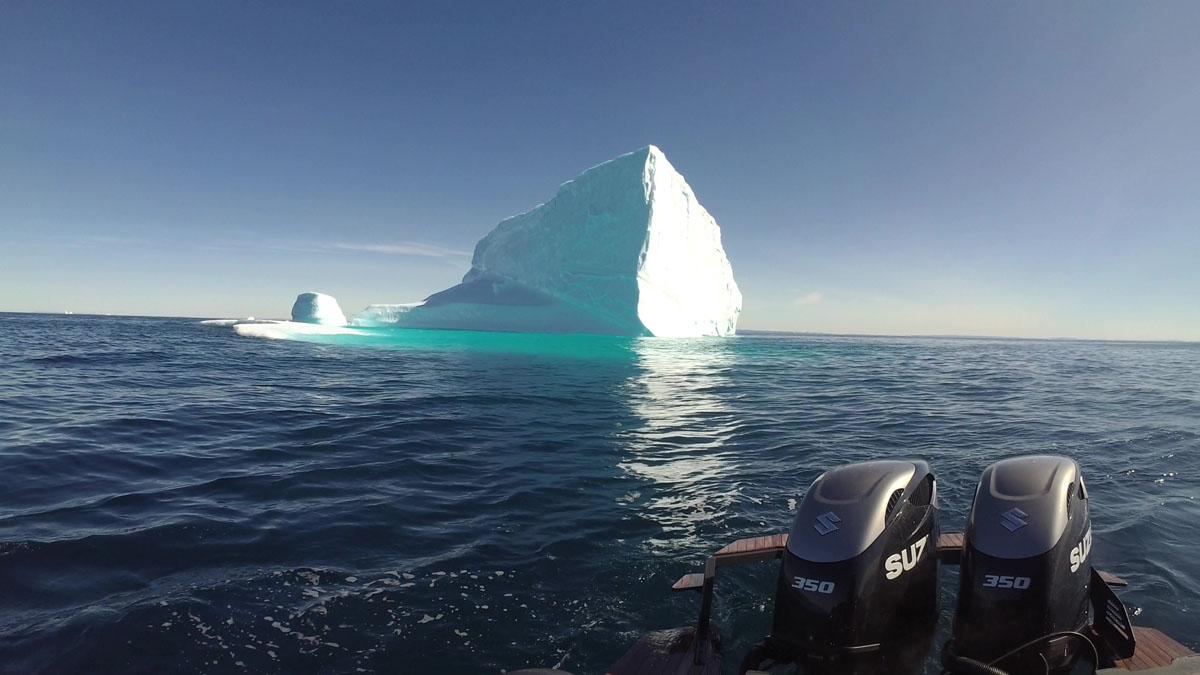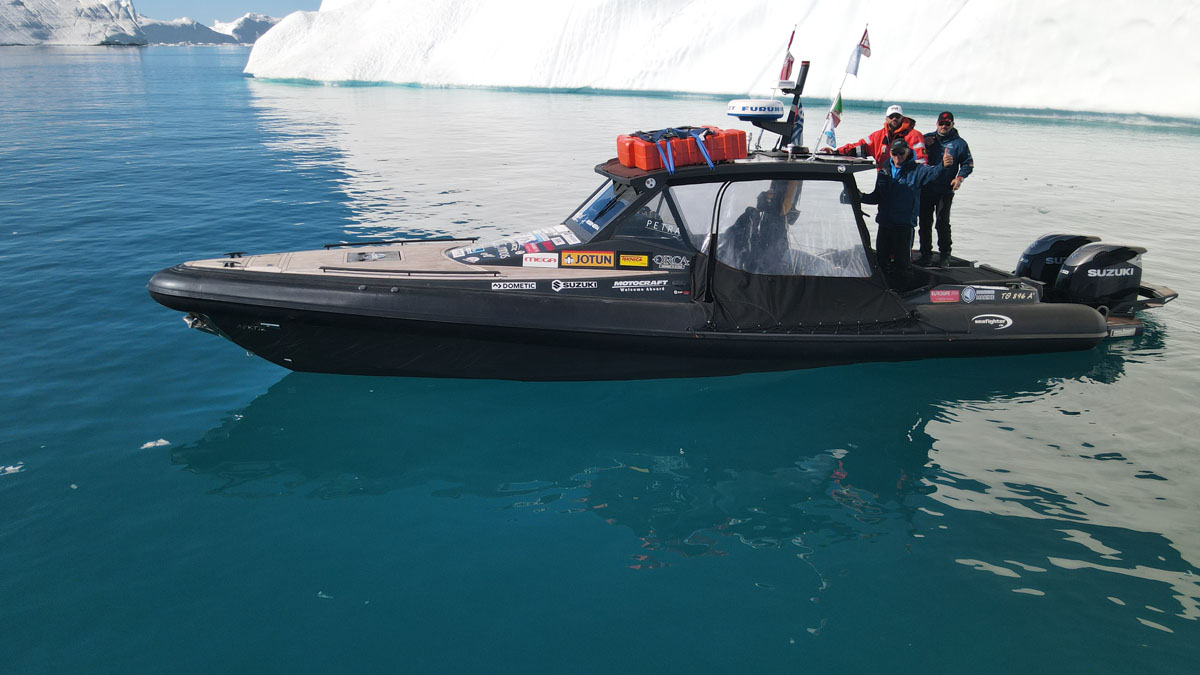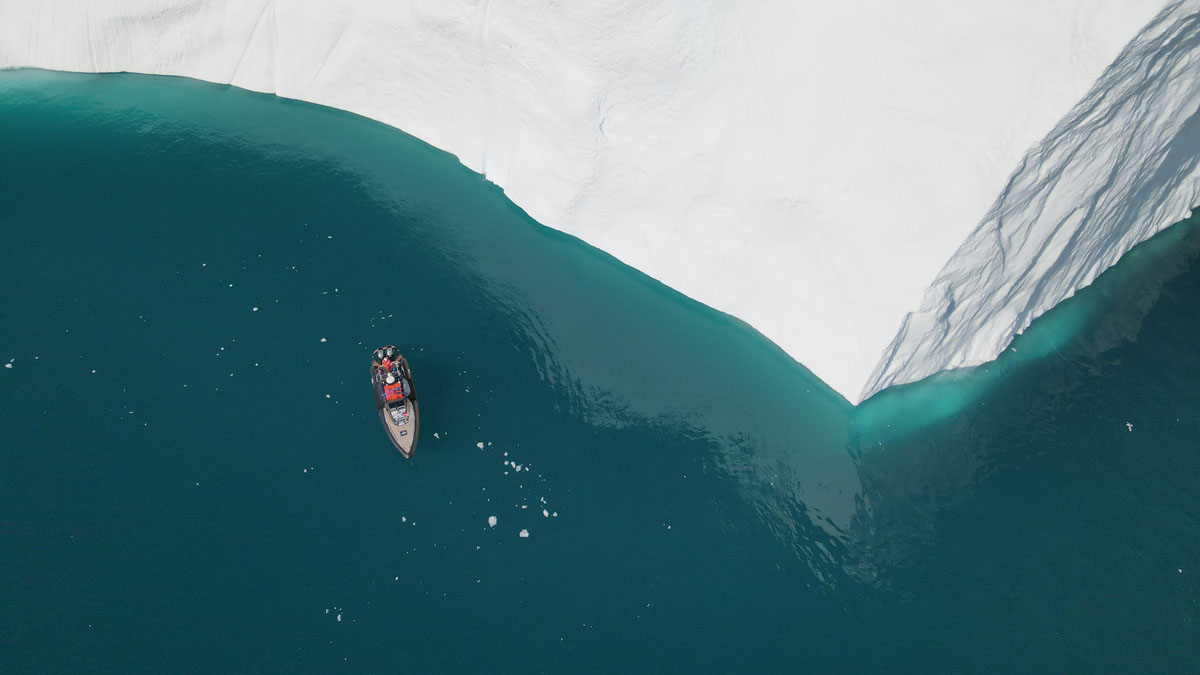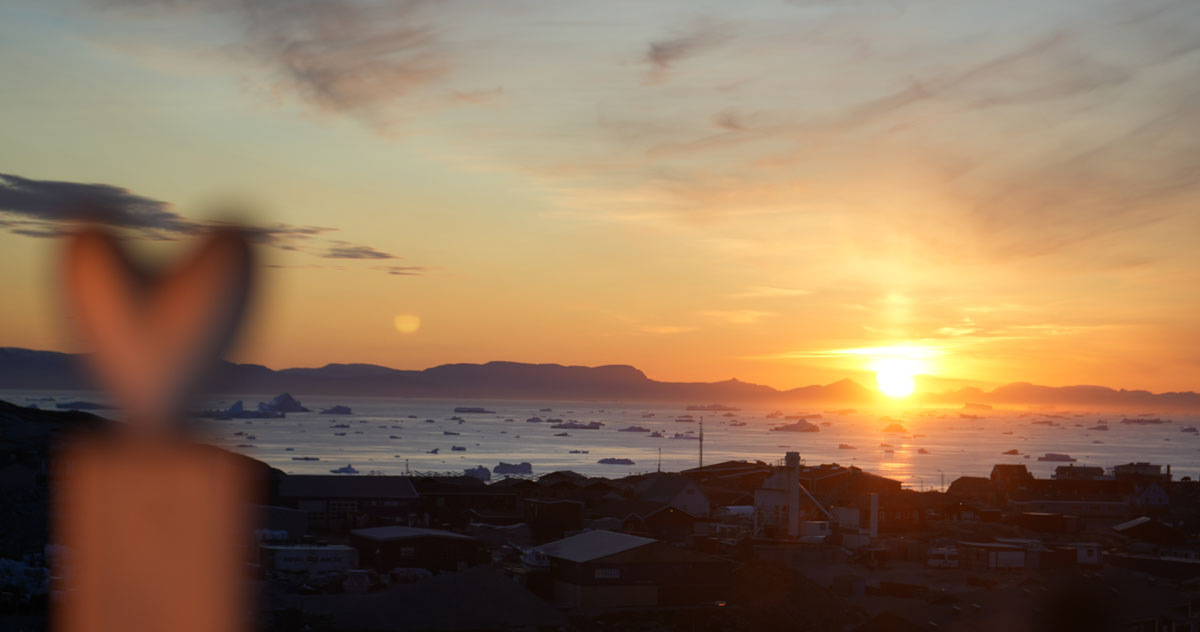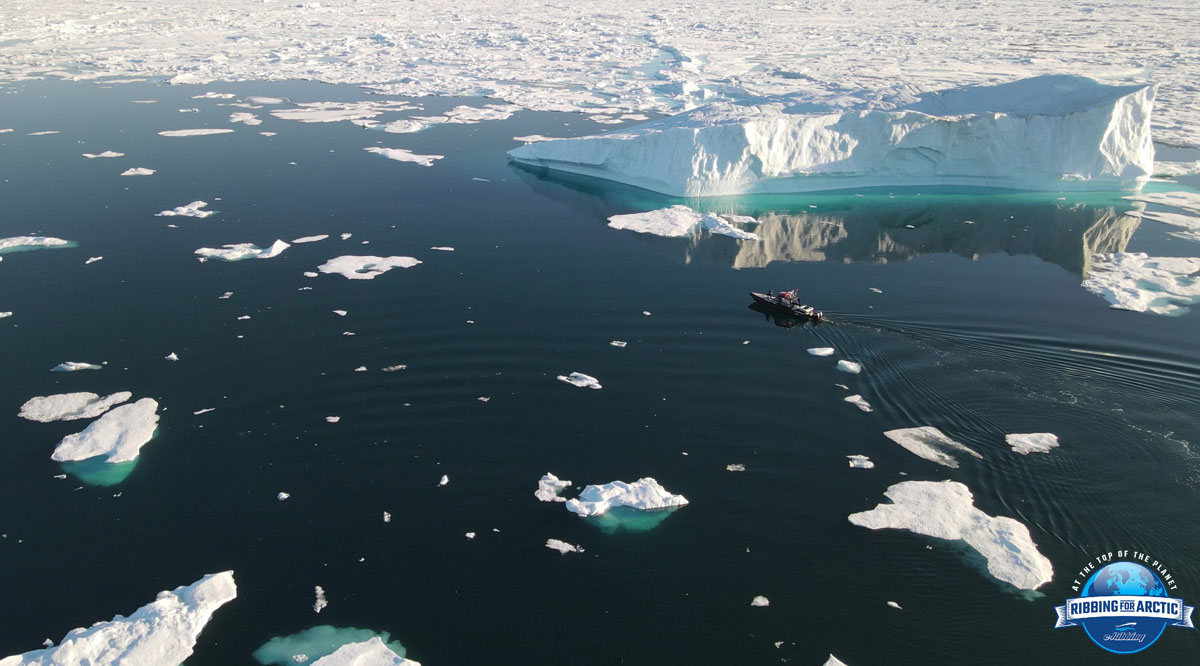
From the 69th to the 77th parallel after 28 hours of continuous navigation
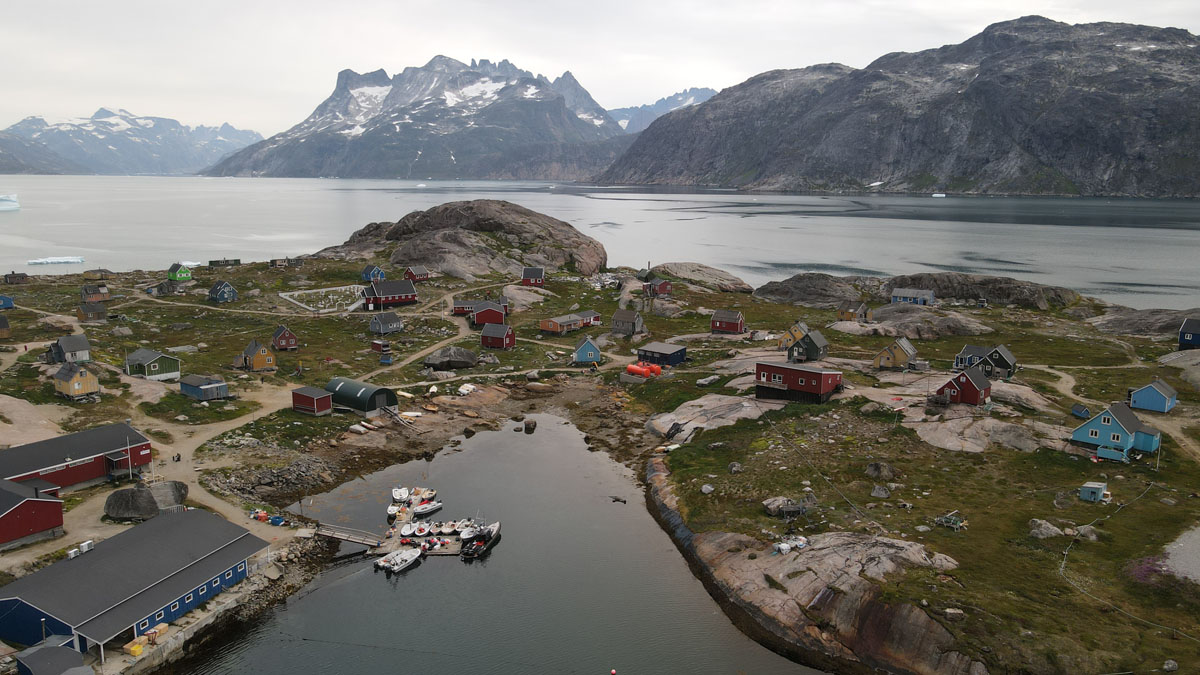
Prince Christian Sound – Aappilattoq – Nanortalik – Paamiout – Nuuk

From the 69th to the 77th parallel after 28 hours of continuous navigation

Prince Christian Sound – Aappilattoq – Nanortalik – Paamiout – Nuuk

Nuuk – Sisimiut – Ilulissat and our entry into the Arctic Circle
She may scream at times. Looks like a foaming monster that wants to devour you. But even then her charm is captivating and takes you on a journey to another world. Where you can see deep into your soul.
I measured against her many times, but my height is too short.
I came face to face with her fiercest faces.
I felt real terror on my skin.
But she taught me to fight hard.
Not to give up and to push my limits.
To deal with my fears and leave them behind.
But also to be patient, to endure and hope.
She taught me to distinguish the small ones and to pass them without being touched.
She revealed to me the real values of life.
But most importantly: she taught me what our true size is!
DAY 29th / Sunday 31 of July 2022
Position: 66°56΄N 53°40΄W – Sisimiut
Our next stop was Sisimiut, 200 nautical miles further north.
Time 15:00΄
We decided to set off from Nuuk after midday when the low barometric was just below Davis Strait giving strong southwesterly winds would be moving away.
At 16:30' we marked our position: 64°37'N 52°28'W and recorded the data of our course. In just an hour and a half we covered 49 miles and burned 164 liters. Our cruising speed was high and fuel consumption very good at 3.3 liters per nautical mile. Without many icebergs in our way, without fog to limit our field of vision.
At 18:00', our position was: 65°18΄N 53°11΄W.
We continued our course with very good statistics although the swells that came at our stern quarter became much bigger and quite impressive.
We had covered 45 miles more, burning 170 liters. We were about halfway through our route and everything looked like we were going to have a beautiful day without any unpleasant surprises.
Time 21:00'
Position: 66°34΄N 53°55΄W.
It was a special moment for us with strong emotions.
I held on, opened the drinks cabinet and took out a bottle of whiskey.
Sunday, July 31 and at nine o'clock in the “night” we celebrated our entry into the Arctic Circle. We were already at the top of the planet: 66 degrees and 34 minutes north of Equator.
Inside the Arctic Circle, the “Land of Midnight Sun” as it is otherwise known, the sun does not set during the summer solstice and is above the horizon (and thus visible at midnight) for 24 hours at least once a year.
The length of the day is very long in summer, without darkness after sunset, a fact very important for navigation.
Although due to climate change the ice is melting at a rapid rate, this does not mean that navigation is easier than in the past. Very few boats have managed to navigate these waters as the dangers are great. These seas require particularly seaworthy vessels and of course crews capable of coping with the extremely extreme conditions. With countless icebergs and high concentrations of ice blocks these waters allow navigation only for a few weeks a year, while to get there you must pass through the worst and roughest seas in the world.
At 22:00΄ we entered the small and crowded port of Sisimiut.
After its entrance, about 100 meters to the left, is the small floating pontoon of the gas station, we put in 725 liters we had burned from Nuuk until here and went deeper into the harbour to find a place to tie up for the night.
However, the harbour was suffocatingly full of the local fishing boats and so we returned to the small jetty of the gas station where we eventually spent the night.
DAY 30th / Monday 1 of August 2022
Position: 69°13΄N 51°06΄W – Ilulissat
At 9 o'clock on Monday morning we left Sisimiut behind and turned our bow to the North.
Our next stop was Ilulissat and its famous glacier at 160 nautical miles.
At 12:00΄ our position was: 68°25΄N 53°42΄W.
We had traveled 96 nautical miles and burned 347 liters.
Air temperature +6 °C.
Water temperature +4 °C.
The sea was calm; we encountered no icebergs on our way while the bright sun and blue sky warmed our souls.
At 15:00΄ we were outside the “outlet” of the Sermermiut glacier which is located immediately below the port of Ilulissat.
For a long time we stood speechless as we could not believe what we were seeing.
Awe and admiration.
We were clearly shocked and deeply emotional. I have no doubt that we lived the best moments of our trip.
There are no words to describe the breathtaking polar landscape that beheld our eyes. We were very lucky and the rare sunshine that prevailed upon our arrival made this place even more magical and absolutely sweetened the wild and imposing beauty of the images that unfolded in front of us as if it was from a fairy tale.
Eerie but at the same time such a real landscape that our eyes are not used to seeing.
A unique destination in the world that deserves to be visited at all costs.
At a speed of 3 knots we were traveling between the huge masses of icebergs that are very close together, in various imposing formations that seemed like they would never melt.
Initially icebergs are drifted north by ocean currents before turning south towards the Atlantic Ocean to eventually reach very low latitudes.
It is even speculated that the iceberg that sank the Titanic came from the Ilulissat glacier, which has been declared a World Heritage Site by Unesco since 2004.
Icebergs are often very large and tall, they can reach more than 500 meters in height, they hit the shallow parts of the seabed and they can stay in the fjords for many months until they break up or are washed away by other icebergs that are constantly breaking off from the glacier.
For many hours we wandered among them and hungrily photographed every corner.
We couldn't get enough of our gaze and only when we realized that time had passed and “night” was approaching, we headed towards the port of Ilulissat. Of course, the course to the port was not easy at all.
You can take a look at the radar screen in the adjacent photo to get a small taste of the numerous icebergs that lay ahead of our bow, spread out over a vast expanse that we had to pass through.
Many times, we were forced to pass through numerous small icicles that were scattered over a long distance, literally blocking our way.
Winding our way through the numerous icebergs that lay even outside the narrow harbor entrance, we finally managed to enter the otherwise large harbor, but it was suffocatingly packed with two and even three rows of local boats.
It is really impossible to find any free berth to tie up.
After first refueling from the fuel station located on the right side of the harbor, after a long time and effort, we finally tied up next to the aluminum local lifeboat.
The town of Ilulissat is the third largest settlement in Greenland, with a population of 4,533 people. It is located approximately 180 nautical miles north of the Arctic Circle and is one of Greenland's largest commercial centers.
Ilulissat is also known by its Danish name Jakobshavn meaning 'Jacob's Harbour' and is Greenland's most visited tourist destination due to its proximity to the Ilulissat Glacier.
In the wider area of the glacier there were Inuit settlements for at least 3000 years. The abandoned settlement of Sermermiut, two kilometers south of the city, was one of the largest in Greenland with about 250 inhabitants.
After the incredible insistence of our wonderful friends, Egon and Laila Pedersen, we stayed overnight at their house from where the view to Ilulissat Bay is amazing.
It was 1:00΄ a.m. and the sun had been standing above the horizon for several hours, giving us uniquely beautiful purple images, with the numerous icebergs looking like anchored ships ready to set sail at dawn the next day.
...keep Ribbing!



